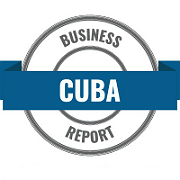This year’s Feria Internacional de La Habana (FIHAV, the Spanish acronym) was one of the most exciting events for trade and commerce to take place in Havana this year. From November 2 until November 7th, Cuba and more than 70 other countries exhibited their products and services at FIHAV 2015 in the ExpoCuba fairgrounds in the Arroyo Naranjo district on the outskirts of Havana. This year’s trade fair was the biggest in its 33 year history. Without a doubt, FIHAV is the most important trade fair in the Caribbean – Latin American region.
Large pavilions sponsored by a multitude of nations exhibited everything from automotive parts, food products, home appliances and furniture, technology, wines and liquor, construction materials, oil and gas investment opportunities, pharmaceutical products, health care technology and more. Large multinational corporations are in the running to find and development new markets and investments with Cuba. Participating in the event, approximately 900 international companies exhibited their products in this year’s FIHAV 2015.
The ExpoCuba grounds covers some 21,700 square meters of exhibition space for countries and companies interested in doing business with Cuba. Major exhibitors included 365 Cuban national corporations, Spain (with four pavilions), China and Canada’s large pavilion. Both Spain, Canada and China have longstanding trade relationships with Cuba. Also occupying pavilions at the trade fair were Italy, China, South Africa, Venezuela, United Arab Emirates, Kuwait, Thailand, Japan, Bulgaria, Curacao and Russia.
Cuba’s representatives for the promotion of foreign trade and investment from ProCuba occupied a booth promoting businesses and investment opportunities. The ZED port of Mariel project booth was also open for business with approved investment projects on display.
Cuba’s national corporations also exhibited in their individual pavilions and in other parts of the FIHAV fairgounds. From CUPET, the national oil company to major biotechnology and pharmaceutical companies such as PharmaCuba, BioCuba Pharma and Heber Biotech SA showed strong presence.
Other Cuban brands present at the trade fair included Cerveza Tinima Cervasas y Maltas, Empresa de Bedidas y Refrescos of Pinar del Rio, Montecristo cigars, Quimimpex Import & Export and Confihar brands as well as Castrol Cuba, S.A..
Internet access and mobile phones could be bought at the ETECSA booth. Those famished from walking around the pavilions and the large exhibition grounds of FIHAV could find plenty of dining options.
With a total of four pavilions, Spain held the biggest presence at FIHAV international fair. Canada occupied a huge pavilion at FIHAV 2015. The Atlantic Canada Opportunities Agency’s booth in Canada’s pavilion featured clean technologies, oceanographic, biotechnology and biological science innovations. Companies selling axels and suspensions, tools, agro exporters and paper products were just a few of the types of products exhibited by Canadian corporations.
Corporate pavilions from other nations exhibited the latest of their products and services. Investment services, construction tools and machines, nautical, logistical and technical services, commercial trucking equipment, naval construction companies, health care suppliers, medical technology, household appliances, textiles and furniture were among the industries on display.
“This entire process has aroused international interest,” Minister of Foreign Trade and Investment Rodrigo Malmierca stated on opening day announcing that Cuba had experienced 4.7 percent growth in the first half of the year, and is expecting to close 2015 with 4 percent, up from an anemic 1.3 percent in 2014. “We are convinced that it is possible to have a normal and civilized relationship with the United States.”
While the US continues to hesitate over lifting its increasingly unpopular trade embargo because of internal politics, Cuba appears to be moving forward in developing its already-established bilateral trade relations as well as adding new relationships into the mix.
American businesses are obviously eager to begin doing business with Cuba but are stymied by their government policies. Despite the U.S. economic blockade, 25 American businesses exhibited at FIHAV 2015. What the Feria Internacional de La Habana demonstrated this year was the excitement generated by the US-Cuba talks. This, too, was the year FIHAV would generate massive attendance numbers and international participation at the event.
What it may also suggest is that Cuba is moving forward in trade relationship building and the necessary bolstering of its economy with or without the removal of the blockade. Countries with long-established trade relations with Cuba have already made millions of dollars profit and aren’t complaining.
Proverbs “that time waits for no one” or “he who hesitates is lost” come to mind. Political foot dragging no doubt contributes to the disappointment of US competitive business interests. American corporations already in Cuba are obviously not willing to wait for the slow grind of the political machine and are ready to push the “forward fast” button.

From our staff writers and editors.















